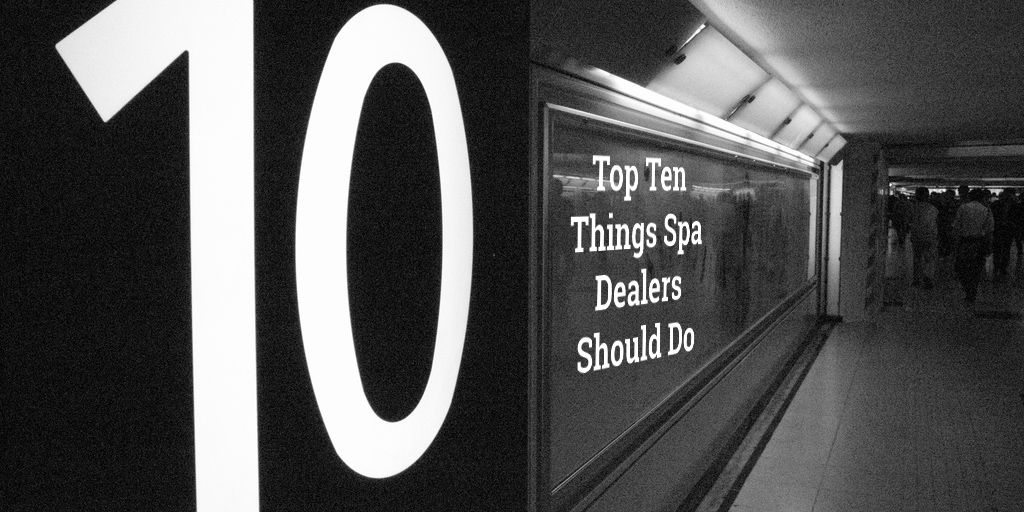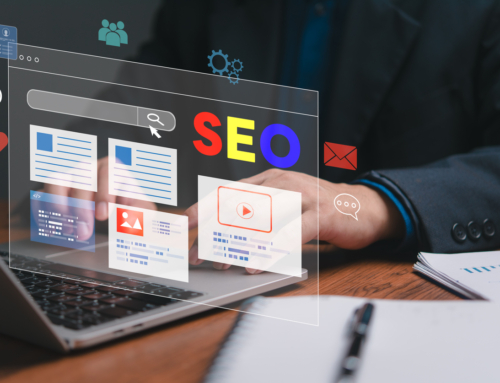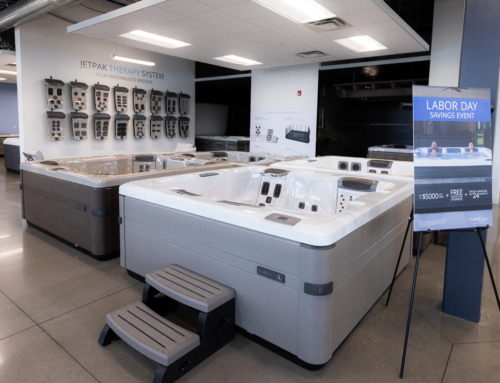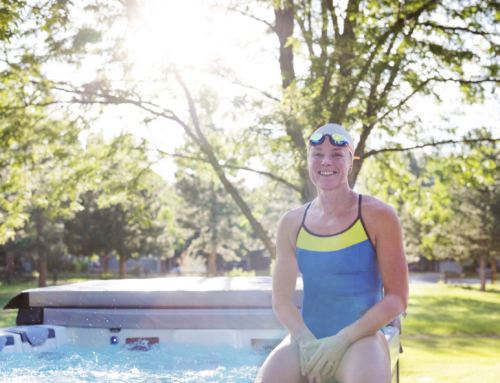Since 2012 we have been consistently researching, writing, and publishing articles on best practice tips for spa retailers. Our readership is quickly evolving into a community of informed and involved spa retailing experts. We’d like to celebrate our loyal subscriber base with a big thank you. And a promise to continue our support of spa dealers with valuable business tools that can boost your business performance to the next level.
To that end, we’re diving headfirst into the Best of the Best produced by Power Per Square Foot so far. Based on our most popular content, the following list outlines the top 10 actions we recommend every spa retailer should be taking if they’re looking to improve performance.
10. Define who you are.
List out your business’s resources and capabilities to determine what distinguishes you from the competition. It’s these core competencies that make up your business identity and serve as a sustainable competitive advantage.
Why: Identity influences how you act, what you sell, how you sell it, what type of client you attract, how your staff behaves, what your store looks like, where it’s located, and what type of advertising you do. It drives loyalty, fosters customer engagement, and improves strategic alignment. Not surprisingly, identity consistently shows up as a key indicator of business success.
9. Document a marketing plan…then implement it.
Set specific and measurable marketing objectives to get a better view of the “why” behind your marketing efforts. Identify your strengths, things your business can improve, opportunities you can take advantage of, and threats your business faces. Once you know what your goals are and where you stand, you can strategize effectively and create a marketing budget that works to that end.
Why: Multiple studies show a formal marketing plan is positively related to and largely determines business performance. Not only does the marketing plan serve as a roadmap for your business, but it also can help motivate employees towards achieving specific sales goals.
8. Network, especially with power partners.
Meet face-to-face with the right people (not necessarily the most people) and be prepared with business cards, flyers, as well as a distinctive pitch. Think in terms of “How can I help?” and not “What can I get?”
Why: Research shows that the time people invest in business networking directly relates to the business generated by that time. For one, people buy from those they like and trust. Networking also serves as an excellent source for meaningful, qualified referrals. And lastly, it offers an opportunity to learn about tried and true business tactics.
7. Train technicians on service…and sales.
Good customer service allows techs to build strong relationships with clients, making the service call an ideal opportunity to sell bigger/ better. Hire the right personnel, facilitate communication between the service and sales teams, and run the department as a separate business unit.
Why: Several dealers have found that their service infrastructure investments achieve a strong ROI. A focus on service provides an additional revenue source and, perhaps more importantly, a protective effect against the increasing influence of big-box retailers and online distributors.
6. Optimize lead follow-up processes.
Take down customer information including notes about their pain points and store it in a database, Then educate and update the customer based on this information to develop your relationship and move the sale forward. Be patient as 81% of all sales happen on or after the fifth contact.
Why: According to DemandGen Report, nurtured leads produce an average 20% increase in sales opportunities versus non-nurtured leads. Forrester Research found that companies which nurture leads make 50% more sales at a cost that’s 33% less than non-nurtured leads. And in a study by CSO Insights, companies that excel at lead nurturing reported having 9% more sales reps making quota.
5. Offer financing…then promote it.
Whether through an established hot tub manufacturer’s program or other financing company, look for a trusted partner. Devise effective in-store strategies to identify financing customers. Then incorporate financing offers through in-store signage and other out-of-store advertising efforts.
Why: Offering financing shortens the sale cycle, facilitates an immediate buying decision, and allows customers to purchase the spa and features they want rather than just those they have to settle for. Plus, purchase totals tend to be greater under financing than those non-financed transactions.
4. Create an appealing test spa area…then promote it.
Build customer experience with a test spa or a fully equipped “mood room.” Thought should be given to location, privacy options, dressing room space, quality of linens/towels, accessibility needs, along with various accessories to be highlighted. Then incorporate the test spa opportunity into all aspects of your promotional strategy.
Why: Test spas drive store traffic and work to move a sale forward without added sales pressure. Studies show over 50% of shoppers say they’d pay a higher price for customer experiences they value most. And 77% of shoppers would be more loyal to stores that provide their personal top three customer experiences.
3. Design an effective website.
Most importantly, keep your basic site structure simple: Each page on your site should have a single, clear objective along with a recognizable call-to-action.
Why: 85% of customers search the web before making a purchase decision. 94% of a website user’s first impressions are design-related. And 75% of consumers admit to making judgments on a company’s credibility based on the company’s website design.
2. Compensate staff to drive sales.
Look at a commission-based salesperson as an investment to the company rather than a business risk. The best way to get the most from each team member varies. Essentially, it comes down to where you decide to land on the spectrum of risk management vs. employee motivation.
Why: Ultimately, commission-centered strategies rely on salespeople to be the closers, freeing up the dealer from being a sales hand so he/she can serve as the more productive traffic generator.
1.Utilize informational trade resources.
Several publications are available for hot tub professionals that outline best business practice insights within the hot tub industry. Look for data-driven and research-supported articles published regularly in H2Insider, SpaRetailer, Aqua Magazine, and Pool & Spa News. And of course, subscribe to those you find most useful.
Why: These professional resources provide invaluable info and tips on making your spa business a retail success.









Leave A Comment